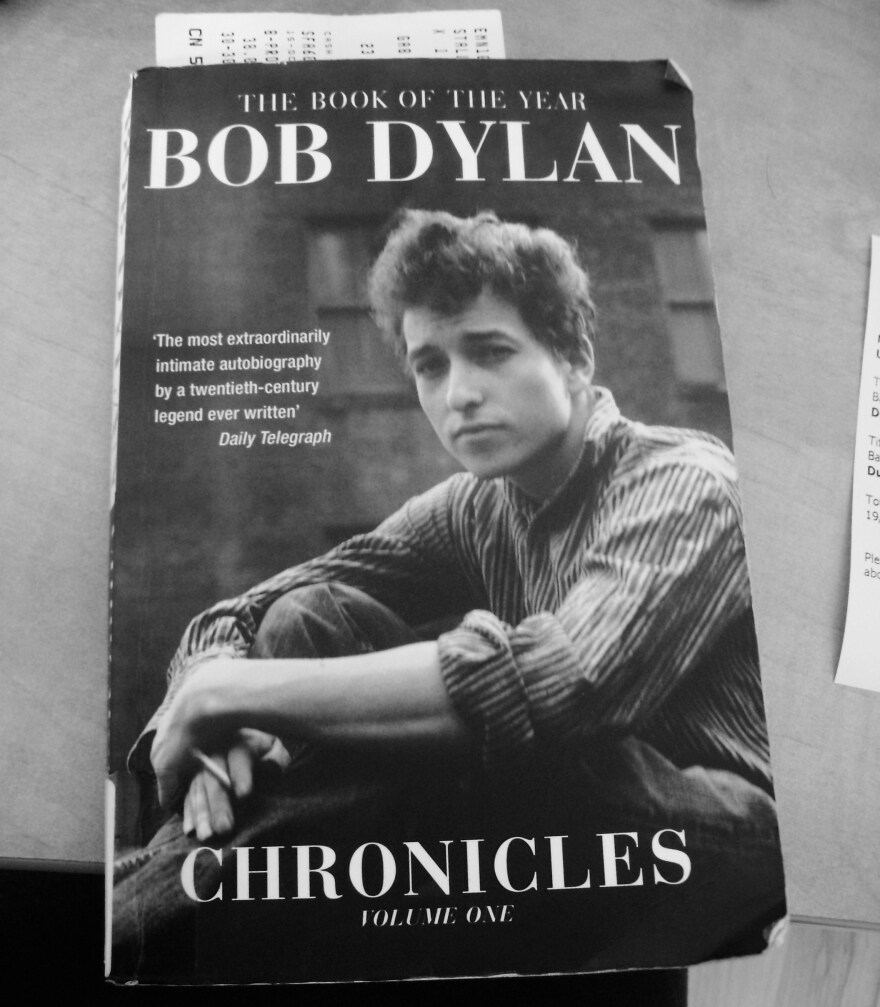Bob Dylan is like our slightly addled great uncle who decided to take up woodworking or small appliance repair.
As celebrity milestone birthdays go, Dylan’s 75th passed pretty quietly last Tuesday.
I would have expected “Forever Young” to have been screaming across the airwaves.
But then again, the airwaves aren’t what they used to be.
Neither is Dylan.
As a kind of sequel to his Sinatra tribute album last year, Bob released a new CD called Fallen Angels last week. (The title, at least, partakes of vintage Dylan inscrutability.)
It features 12 Tin Pan Alley standards by figures such as Johnny Mercer and Harold Arlen, including, “Come Rain or Come Shine,” “That Old Black Magic,” “Young At Heart,” “It Had to be You” etc.
Bob coughs and barks his way through these, pretty much in the manner of the previous album.
There is no new commentary to be offered, and none is needed. I think we’re all in basic agreement that at this point, Bob gets to do what he decides to do, whether it’s to soldier semi-continuously across the land, serving up subdued and often barely recognizable specimens of his oeuvre at Triple A ballparks and county fairs, or scratch out covers of American Songbook standards in the studio, backed by a country-flavored combo seemingly reading off stock lead sheets like any Holiday Inn lounge band.
Why covers?
Dylan has written, in round numbers, 500 songs.
In general, people don’t write music past the age of 70 or so. On the classical side, the exceptions are exceptional: Vaughan Williams, Verdi, some American mavericks like Carlisle Floyd and Ned Rorem (both still alive, at 90 and 92 respectively), a few others. On the pop side, I don’t know, John Williams is still going, although you maybe should put an asterisk in there when you have a whole team of assistants.
I can’t off-hand think of any really important pop/rock material created by septuagenarians, but I’m open to being corrected.
So we give Bob something of a pass on the standards. He’s like our slightly addled great uncle, who has suddenly decided to take up woodworking or small appliance repair. He’s not great at it, but he seems to be enjoying it, and he’s given us a lot over the years, so why intrude?



Meanwhile, here’s the one thing I would like to see Dylan do with his remaining time on this veil: give us Volume 2, and preferably also 3, of his autobiographical “Chronicles.” Volume 1 turned out to be, against all odds, pleasingly (and surprisingly) lucid and detail-rich. It came out 12 years ago.
If not for Volume 1, we would never have known that young Bob Dylan, having just arrived in New York in the early 60s, chasing the legacies of Woody Guthrie and Robert Johnson, nostalgically played Judy Garland songs on West Village jukeboxes. I want to know more facts like that.

As Dylan’s walk in the sun winds down, we just don’t know enough about the life. We have the Scorsese film documentary (“No Direction Home,” 2005), and that’s useful. But I never believe that non-musicians can get fully inside the heads of musicians. And even at over three hours, we aren’t given enough Dylan talking specifically about Dylan.
It would be ideal if “Chronicles” Vols. 2 and 3 could resemble Stephen Sondheim’s two strenuously self-explicating tomes of a couple of years ago, “Finishing the Hat,” and “Look, I Made a Hat.” Both were a little crankier and a little more defensive than we perhaps were expecting, but even so they threw new light on the work, and the process by which it came to be.
If Dylan could give us something like that, I say let him duck into the studio now and then and turn out a Steve and Eydie tribute disc, or “The Rudolf Friml Trunk Song Album,” or whatever the heck he wants.
Reach Steve Metcalf at spmetcalf55@gmail.com.


